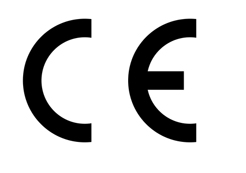
CE mark
The CE mark is the manufacturer's affirmation that products meet all the requirements contained in relevant EU directives.

How CE marking works
The European Commission describes the CE marking process for a product in six stages. By affixing the CE mark to a product, the manufacturer declares, under its own responsibility, that the product complies with all legal requirements for CE marking. The European Commission's web site contains a good overview of these six steps and what they mean.
Six steps to CE marking
The CE mark applies to most products sold in the EEA, regardless of where they were manufactured. Products brought in from outside the EEA must also have the CE mark. The marking plays a key role in free trade and the harmonisation of rules within the EEA. Goods with the marking can circulate freely in the EU's internal market.
Which products must have a CE mark?
First it is necessary to determine whether the product is covered by any EU directives. CE marking is only applicable to products covered by one of the so-called 'New Approach Directives'. In addition to these, there are several other directives. Some of them require CE marking, others do not. Something called the Blue Guide explains how to interpret the various directives.
Imported products are subject to the same rules. It is the importer and/or the person placing the product on the market who must ensure that the product is correctly CE marked.


